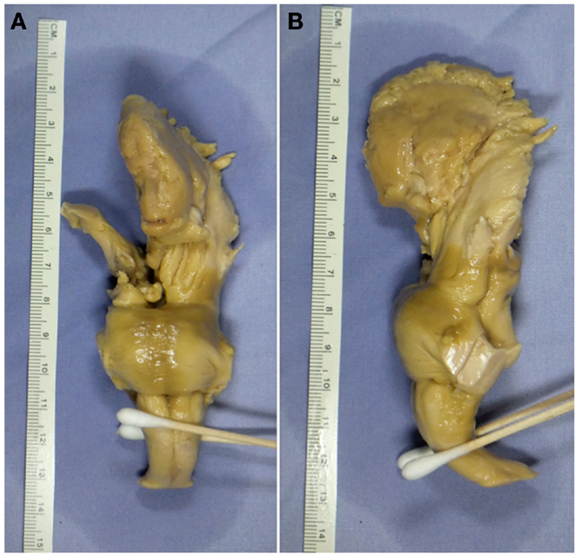|
Gene Therapy
Gene therapy is Health technology, medical technology that aims to produce a therapeutic effect through the manipulation of gene expression or through altering the biological properties of living cells. The first attempt at modifying human DNA was performed in 1980, by Martin Cline, but the first successful nuclear gene transfer in humans, approved by the National Institutes of Health, was performed in May 1989. The first therapeutic use of gene transfer as well as the first direct insertion of human DNA into the nuclear genome was performed by French Anderson in a trial starting in September 1990. Between 1989 and December 2018, over 2,900 clinical trials were conducted, with more than half of them in Phases of clinical research, phase I. In 2003, Gendicine became the first gene therapy to receive regulatory approval. Since that time, further gene therapy drugs were approved, such as alipogene tiparvovec (2012), Strimvelis (2016), tisagenlecleucel (2017), voretigene neparvovec ... [...More Info...] [...Related Items...] OR: [Wikipedia] [Google] [Baidu] |
Health Technology
Health technology is defined by the World Health Organization as the "application of organized knowledge and skills in the form of devices, medicines, vaccines, procedures, and systems developed to solve a health problem and improve quality of lives". This includes pharmaceuticals, devices, procedures, and organizational systems used in the healthcare industry, as well as computer-supported information systems. In the United States, these technologies involve standardized physical objects, as well as traditional and designed social means and methods to treat or care for patients. Development Pre-digital era During the pre-digital era, patients suffered from inefficient and faulty clinical systems, processes, and conditions. Many medical errors happened in the past due to undeveloped health technologies. Some examples of these medical errors included adverse drug events and alarm fatigue. When many alarms are repeatedly triggered or activated, especially for unimportant events, ... [...More Info...] [...Related Items...] OR: [Wikipedia] [Google] [Baidu] |
Valoctocogene Roxaparvovec
Valoctocogene roxaparvovec, sold under the brand name Roctavian, is a gene therapy used for the treatment of hemophilia A. It was developed by BioMarin Pharmaceutical. Valoctocogene roxaparvovec is made of a virus (AAV5) that has been modified to contain the gene for factor VIII, which is lacking in people with hemophilia A. It is an adeno-associated virus vector-based gene therapy. It is given by intravenous infusion. The most common side effects include increased levels of the liver enzymes alanine aminotransferase and aspartate aminotransferase (signs of possible liver problems), increased levels of the enzyme lactate dehydrogenase (sign of possible tissue damage), nausea (feeling sick), and headache. Valoctocogene roxaparvovec was approved for medical use in the European Union in August 2022, and in the United States in June 2023. Medical uses In the European Union, valoctocogene roxaparvovec is indicated for the treatment of severe hemophilia A (congenital facto ... [...More Info...] [...Related Items...] OR: [Wikipedia] [Google] [Baidu] |
Bone Marrow Transplantation
Hematopoietic stem-cell transplantation (HSCT) is the transplantation of multipotent hematopoietic stem cells, usually derived from bone marrow, peripheral blood, or umbilical cord blood, in order to replicate inside a patient and produce additional normal blood cells. HSCT may be autologous (the patient's own stem cells are used), syngeneic (stem cells from an identical twin), or allogeneic (stem cells from a donor). It is most often performed for patients with certain cancers of the blood or bone marrow, such as multiple myeloma, leukemia, some types of lymphoma and immune deficiencies. In these cases, the recipient's immune system is usually suppressed with radiation or chemotherapy before the transplantation. Infection and graft-versus-host disease are major complications of allogeneic HSCT. HSCT remains a dangerous procedure with many possible complications; it is reserved for patients with life-threatening diseases. As survival following the procedure has increa ... [...More Info...] [...Related Items...] OR: [Wikipedia] [Google] [Baidu] |
Ionis Pharmaceuticals
Ionis Pharmaceuticals, Inc. is a biotechnology company based in Carlsbad, California, that specializes in discovering and developing RNA-targeted therapeutics. The company has three commercially approved medicines: Spinraza ( Nusinersen), Tegsedi ( Inotersen), and Waylivra ( Volanesorsen), and has four drugs in pivotal studies: tominersen for Huntington's disease (together with Roche), tofersen for SOD1- ALS, AKCEA-APO(a)-LRx for cardiovascular disease, and AKCEA-TTR-LRx for all forms of TTR amyloidosis. The company was named Isis Pharmaceuticals until December 2015. History The company was founded in 1989 as Isis Pharmaceuticals by Stanley T. Crooke, a former head of research of GlaxoSmithKline, with the goal of commercializing antisense therapy. In 1992, the company received its first approval by the Food and Drug Administration for an investigational new drug application in 1992 for a genital warts drug candidate. The FDA approval marked the first time for the company t ... [...More Info...] [...Related Items...] OR: [Wikipedia] [Google] [Baidu] |
Alnylam
Alnylam Pharmaceuticals, Inc. is an American biopharmaceutical company focused on the discovery, development and commercialization of RNA interference (RNAi) therapeutics for genetically defined diseases. The company was founded in 2002 and is headquartered in Cambridge, Massachusetts. In 2016, ''Forbes'' included the company on its "100 Most Innovative Growth Companies" list. History The company is a spin-off from the Max Planck Institute for Biophysical Chemistry. In 2002, Alnylam was founded by scientists Phillip Sharp, Paul Schimmel, David Bartel, Thomas Tuschl, and Phillip Zamore, and by investors Christoph Westphal and John Kennedy Clarke; John Maraganore was the founding CEO. The company was named after Alnilam, a star in Orion's belt. The spelling was modified to make it unique. In 2003, the firm merged with the German pharmaceutical company, Ribopharma AG. The newly formed company also received $24.6 million in funding from private-equity firms. On February 27, ... [...More Info...] [...Related Items...] OR: [Wikipedia] [Google] [Baidu] |
Small Interfering RNA
Small interfering RNA (siRNA), sometimes known as short interfering RNA or silencing RNA, is a class of double-stranded RNA, double-stranded non-coding RNA, non-coding RNA, RNA molecules, typically 20–24 base pairs in length, similar to microRNA (miRNA), and operating within the RNA interference (RNAi) pathway. It interferes with the gene expression, expression of specific genes with complementary nucleotide sequences by degrading messenger RNA (mRNA) after Transcription (biology), transcription, preventing translation (biology), translation. Text was copied from this source, which is available under Creative Commons Attribution 4.0 International License It was discovered in 1998 by Andrew Fire at the Carnegie Institution for Science in Washington, D.C. and Craig Mello at the University of Massachusetts in Worcester. Structure Naturally occurring siRNAs have a well-defined structure that is a short (usually 20 to 24-base pair, bp) double-stranded RNA (dsRNA) with phosph ... [...More Info...] [...Related Items...] OR: [Wikipedia] [Google] [Baidu] |
Allele-specific Oligonucleotide
An anti-sense oligonucleotide (ASO) is a short piece of synthetic DNA complementary to the sequence of a variable target DNA. It acts as a probe for the presence of the target in a Southern blot assay or, more commonly, in the simpler dot blot assay. It is a common tool used in genetic testing, forensics, and molecular biology research. An ASO is typically an oligonucleotide of 15–21 nucleotide bases in length. It is designed (and used) in a way that makes it specific for only one version, or allele, of the DNA being tested. The length of the ASO, which strand it is chosen from, and the conditions by which it is bound to (and washed from) the target DNA all play a role in its specificity. These probes can usually be designed to detect a difference of as little as 1 base in the target's genetic sequence, a basic ability in the assay of single-nucleotide polymorphisms (SNPs), important in genotype analysis and the Human Genome Project. To be detected after it has bound to its ta ... [...More Info...] [...Related Items...] OR: [Wikipedia] [Google] [Baidu] |
Transduction (genetics)
Transduction is the process by which foreign DNA is introduced into a cell by a virus or viral vector. An example is the viral transfer of DNA from one bacterium to another and hence an example of horizontal gene transfer. Transduction does not require physical contact between the cell donating the DNA and the cell receiving the DNA (which occurs in conjugation), and it is DNase resistant ( transformation is susceptible to DNase). Transduction is a common tool used by molecular biologists to stably introduce a foreign gene into a host cell's genome (both bacterial and mammalian cells). Discovery (bacterial transduction) Transduction was discovered in ''Salmonella'' by Norton Zinder and Joshua Lederberg at the University of Wisconsin–Madison in 1952. In the lytic and lysogenic cycles Transduction happens through either the lytic cycle or the lysogenic cycle. When bacteriophages (viruses that infect bacteria) that are lytic infect bacterial cells, they harness the ... [...More Info...] [...Related Items...] OR: [Wikipedia] [Google] [Baidu] |
Viral Capsid
A capsid is the protein shell of a virus, enclosing its genetic material. It consists of several oligomeric (repeating) structural subunits made of protein called protomers. The observable 3-dimensional morphological subunits, which may or may not correspond to individual proteins, are called capsomeres. The proteins making up the capsid are called capsid proteins or viral coat proteins (VCP). The virus genomic component inside the capsid, along with occasionally present virus core protein, is called the virus core. The capsid and core together are referred to as a nucleocapsid (cf. also virion). Capsids are broadly classified according to their structure. The majority of the viruses have capsids with either helical or icosahedral structure. Some viruses, such as bacteriophages, have developed more complicated structures due to constraints of elasticity and electrostatics. The icosahedral shape, which has 20 equilateral triangular faces, approximates a sphere, while the h ... [...More Info...] [...Related Items...] OR: [Wikipedia] [Google] [Baidu] |
Ex Vivo
refers to biological studies involving tissues, organs, or cells maintained outside their native organism under controlled laboratory conditions. By carefully managing factors such as temperature, oxygenation, nutrient delivery, and perfusing a nutrient solution through the tissue's vasculature, researchers sustain function long enough to conduct experiments that would be difficult or unethical in a living body. ''Exvivo'' models occupy a middle ground between '' in vitro'' () models, which typically use isolated cells, and '' in vivo'' () studies conducted inside living organisms, offering both experimental control and physiological relevance. ''Ex vivo'' platforms support pharmacologic screening, toxicology testing, transplant evaluation, developmental biology, and investigations of disease-mechanism research across medicine and biology, from cardiology and neuroscience to dermatology and orthopedics. Because they often use human tissues obtained from clinical ... [...More Info...] [...Related Items...] OR: [Wikipedia] [Google] [Baidu] |
In Vivo
Studies that are ''in vivo'' (Latin for "within the living"; often not italicized in English) are those in which the effects of various biological entities are tested on whole, living organisms or cells, usually animals, including humans, and plants, as opposed to a tissue extract or dead organism. Examples of investigations ''in vivo'' include: the pathogenesis of disease by comparing the effects of bacterial infection with the effects of purified bacterial toxins; the development of non-antibiotics, antiviral drugs, and new drugs generally; and new surgical procedures. Consequently, animal testing and clinical trials are major elements of ''in vivo'' research. ''In vivo'' testing is often employed over ''in vitro'' because it is better suited for observing the overall effects of an experiment on a living subject. In drug discovery, for example, verification of efficacy ''in vivo'' is crucial, because ''in vitro'' assays can sometimes yield misleading results with drug c ... [...More Info...] [...Related Items...] OR: [Wikipedia] [Google] [Baidu] |





